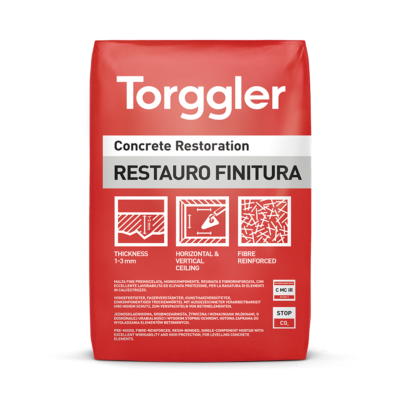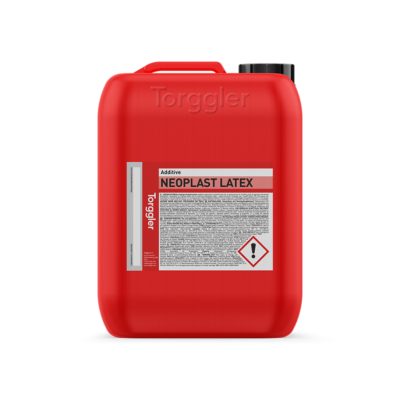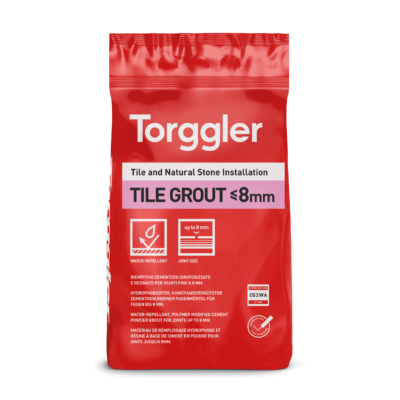Colabile
Premixed, high-strength, fibre-reinforced mortar, UNI EN 1504-3 PCC type and R4 class, applicable by casting in formwork for the reconstruction od structural components.
Premixed, high-strength, fibre-reinforced mortar, UNI EN 1504-3 PCC type and R4 class, applicable by casting in formwork for the reconstruction od structural components.
Discover more



Colabile is a ready-to-use, fiber-reinforced, gray-colored mortar based on high-strength special cements, selected aggregates and special additives. Its self-levelling power makes it possible to carry out repairs and volumetric reinstatements in large thicknesses by pouring into formworks, achieving perfect and fast filling without the need for vibration. A slight expansion in both the plastic and post-hardening phases makes it possible to compensate for shrinkage by ensuring perfect plugging of every interstice with considerable improvement in final adhesion characteristics, while avoiding cracking. The mortar, although fluid, is cohesive and does not undergo phenomena of component separation. It guarantees high mechanical properties with particular reference to flexural strength, an important parameter for workmanlike repairs of reinforced concrete. Colabile is a structural repair product for concrete structures by means of hydraulic mortar of type PCC and class R4 according to EN 1504-3, in addition Colabile is a mortar with excellent resistance to penetration of chloride ions, determined according to EN 13396.
Preparation
The substrate must be clean and well keyed. Hammer and scrape the substrate to remove all loose, crumbling or non-cohesive material until a clean, resistant surface is revealed. Remove all traces of carbonated concrete from the reinforcement. Clean thoroughly using a dry or wet sand blaster to expose the bare metal. To protect against rust and corrosion, apply Restauro Ferri on the reinforcement. The day before casting, wet the substrate until the water stops soaking in.
Mixing the product
Mix Colabile with approximately 14 to 16% water (about 3.5 to 4.0 litres per 25 kg bag) depending on the consistency required. Do not use more than 4 litres for 25 kg of product. Pour approximately 3/4 of the total amount of water in the cement mixer and, while the mixer is moving, add the dry premixed mortar, pouring it in uniformly and continuously. Mix until smooth and free of lumps. Then add the rest of the water until you obtain the required consistency. For small quantities, a mechanical stirrer (low-speed drill with mixer attachment) may also be used, following the same procedure. Whatever the type of mixer used, avoid incorporating an excessive amount of air in the mixture. Very small quantities may be mixed by hand using a bucket and trowel. In this case, more water may be needed in proportion and the end quality may not be as good in terms of mechanical properties (shrinkage and risk of cracking).
Application
The mixture prepared in this way has a pot life of about 30 minutes under normal conditions (+20 °C). Higher temperatures reduce pot life. Wet the surface again until it is saturated and let the excess water evaporate or remove it with a sponge. Pour the mixture into the forms smoothly and from one side only so that the air can escape from the other side. Use iron rods or bars to help fill in narrow gaps or crevices. Vibrating is not necessary. For thicknesses greater than 2 cm, the mortar must be reinforced with galvanized mesh and this must have a cover of at least 1 cm. For final layers more than 4 cm thick, electro-welded mesh may also be used. For layers 1 to 2 cm thick, reinforcement mesh is not necessary but the substrate must be well keyed so as to counter expansion. For cavities larger than 3-4 cm, dilute Colabile up to a maximum of 50% by weight of fine gravel (3-7 mm) i.e. 2 parts Colabile to 1 part fine gravel. In practical terms this means approximately 3 buckets of fine gravel for every 100 kg (equal to four 25 kg bags) of Colabile. This changes some of the characteristics of the product such as the amount of water required for the mix which is reduced from approximately 14% of the product to approximately 10% of the product when diluted with gravel. Mechanical performance in terms of compression resistance is reduced by approximately 5% to somewhere in the order of 60 MPa. Pourable can also be pumped with suitable piston or worm plastering machine such as Turbosol or Putzmeister, excluding continuous mixing machines.
Cleaning
The tools used for laying can be cleaned with water before the mortar hardens; afterwards cleaning can be carried out only by mechanical removal.
Colabilevmust be stored in a dry, protected place. Unopened in its original bags, the product can be stored for at least 12 months.
| Color | Code | Packaging | Packaging size | Pallet | Barcode |
|---|---|---|---|---|---|
| Grey | 6300 | bag | 25kg |
50 bags
|
Colabile is ideal in construction engineering for repairing damaged beams, columns and string courses, where casting in formwork is recommended. It can be used to good advantage to repair thick fronts, ledges and parapets by casting in formwork and for volume restoration of damaged floor slabs and decking. It can also be used for anchorage and placement of lightweight structures and machinery, taking into account the time taken to develop the mechanical strength required to support the structure or machine under working conditions. Using the UNI EN 1504-9 classification, Colabile is suitable for Repair Principle 3 (Concrete Restoration), Repair Principle 4 (Structural Strengthening) and Repair Principle 7 (Preserving or restoring passivity) applications using Method 3.1 (Applying mortar by hand), Method 4.4 (Adding mortar or concrete) and Method 7.1 (Increasing cover to reinforcement with additional cementitious mortar or concrete).
| PARAMETER AND METHOD | REQUIREMENT EN 1504-3 | VALUE |
| MEASURED ON POWDER PRODUCT | ||
| Consistence | Powder | |
| Colour | grey | |
| Bulk density MIT 13 (*) | 1.400 kg/m3 | |
| Granulometry (EN 12192-1) | 0-2,5 mm | |
| Water soluble chlorides (EN 1015-17) | ≤ 0,05% | < 0,01% |
| MEASURED ON FRESH MIX | ||
| Mixing water | 14-16% | |
| Density of fresh mix (EN 1015-6) | 2,200 kg/m³ | |
| Mix consistency | Fluid and pourable | |
| Setting time: start (EN 196-3) | approx. 6 ore | |
| Setting time: finish (EN 196-3) | approx. 8 ore | |
| Mix pot life (EN 13395) | > 30 min | |
| Free expansion in plastic stage (UNI 8996) | 0,80 % | |
| Contrasted expansion at 24 hours (UNI 8147) | 0,006 % | |
| Contrasted expansion at 28 days (UNI 8147) | 0,017 % | |
| Application temperature | from +5 °C to +30 °C | |
| MEASURED ON HARDENED PRODUCT | ||
| Operating temperature | from -20 °C to +90 °C | |
| Compressive strength at 1 day (EN 12190) | approx. 23 MPa | |
| Compressive strength at 7 day (EN 12190) | approx. 50 MPa | |
| Compressive strength at 28 day (EN 12190) | ≥ 45 MPa | approx. 60 MPa |
| Flexing strength at 1 day (EN 12190) | approx. 5 MPa | |
| Flexing strength at 7 day (EN 12190) | approx. 7 MPa | |
| Flexing strength at 28 days (EN 12190) | approx. 10 MPa | |
| Compression modulus of elasticity (EN 13412) | ≥ 20 GPa | approx. 25 GPa |
| Adhesion by pull-off test (EN 1542) | ≥ 2,0 MPa | approx. 2,7 MPa |
| Carbonation resistance (EN 13295) | dk ≤ control concrete | dk = 0 mm (no CO2 penetration) |
| Penetration of chloride ions (EN 13396) | Penetration values after 28 days | < 4 mm |
| Penetration values after 3 months | < 8 mm | |
| Penetration values after 6 months | < 8 mm | |
| Impeded shrinkage/expansion (EN 12617-4) | Bond strength after test: ≥ 2,0 MPa | approx. 3,0 MPa |
| Thermal compatibility (freezing-thawing cycles) (EN 13687-4) | Bond strength after 50 cycles: ≥ 2,0 MPa | approx. 2,5 MPa |
| Capillary absorption (EN 13057) | ≤ 0,5 kg/(m²*h0,5) | approx. 0,3 kg/(m²*h0,5) |
| Reaction to fire (EN 13501-1) | Value declared by the producer | Class A1 |
| Product classification (EN 1504-3) | R4 PCC | |
1 MPa is equal to 1 N/mm2
* Torggler’s Internal Methods (MIT) are available on request.
Consumption is approximately 2000 kg/m3.
Contact our team for personalized support and product guidance.